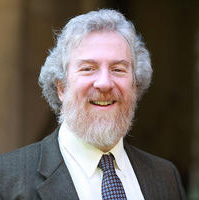Breath of Life—Night or Morning

The journey through the Passover seder is beloved by many households and communities that gather together. While the meal itself is a feast, the Aggadah, the telling of the story that comes before it, is a rich and multifaceted experience that brings together text and song, classic primary sources, modern interpretations, and personal experience.
After the meal, there are four principal elements of the seder. Three of these are almost universally included and expounded upon: some form of birkat hamazon (grace after meals), the liturgy surrounding Elijah (see last week’s commentary), and the final songs and conclusion. A fourth element is widely neglected: the final psalms of Hallel and the ancient poem Nishmat are often presented in smaller print, and are bereft of commentary or explication in the majority of modern Haggadot; in some, they are entirely omitted. I have some sympathy for the view that these texts will be chanted in synagogue the next morning, and (provided we get there sufficiently early) they might reasonably be omitted from what is already a late night.
But there is more to it than that—and I offer here some ideas and reflections that inspire me to reconnect with the “Soul of All Life” (Nishmat Kol Chai) at seder this year. A teaching attributed to Rabbi Joseph Soloveitchik identifies a critical distinction between two mitzvot. In Exodus 13:8, we are commanded, “Vehigadta levin’kha,” and in Exodus 10:2, “tesaper be’oznei vin’kha“; both cases might be translated as “Tell / Relate to your children.” Rabbi Soloveitchik follows a long line of commentators who seek to make a distinction between the two Hebrew verbs. He suggests that the first case is the basis for the command to “remember” or “mention” the Exodus, and that this requires only intellectual engagement, or the encounter with ideas and information processed analytically and cognitively. However, he asserts that the second case, which uses the verb saper, requires emotional (spiritual) involvement, and that the Hallel of the seder—alone among all recitations of Hallel—is a mitzvah commanded by Torah (rather than of rabbinic origin).
I was taught in yeshiva that the Hallel is divided before and after the meal so that the meal itself becomes a component of Hallel in relation to the seder. Our conversations, reflections, and debates are a part of the way in which we praise God. The two psalms before the meal are texts of pure praise, while the remainder of Hallel after it includes questions and petitions. The fullness of the poetry in psalms and later liturgy is found then at the end of the seder, leading to the fourth cup of wine that is associated with universal and ultimate redemption for the Jewish people and all humanity. So it is fitting that the poem “May All Living Souls Give Praise” (Nishmat Kol Chai) brings the Hallel to a universal conclusion, referring to 15 kinds of praise that perhaps correspond to the 15 traditional elements of the seder. We cannot understand, experience, and give thanks for liberation with our minds, words, and ideas alone—poetry and song are not optional, they are demanded.
Hear Nishmat chanted by Rabbi Shlomo Carlebach.
Listen to a haunting solo version of Nishmat by Nathalie Rosenthal.



